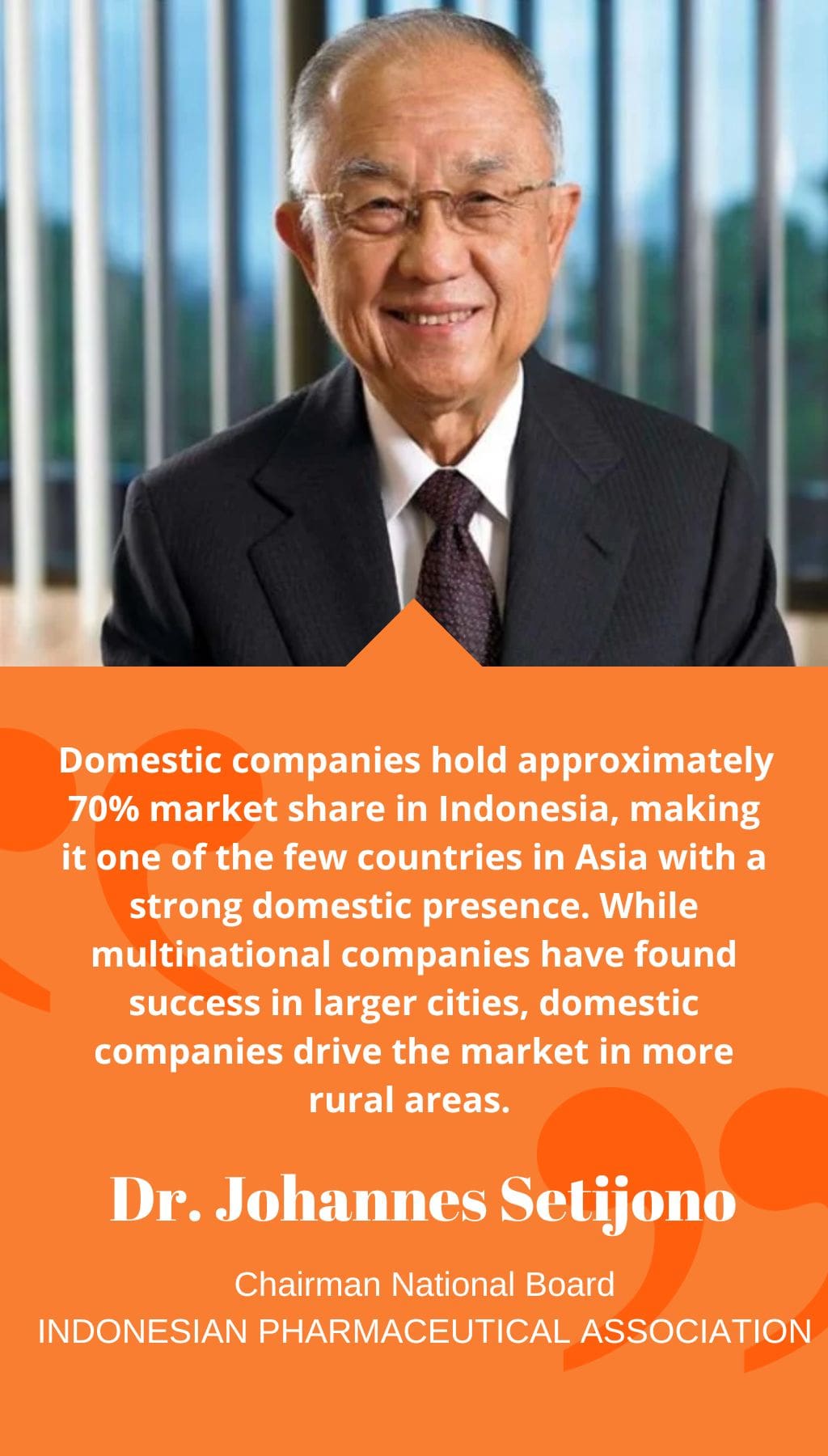
- Indonesia | 28 August 2015

Please provide a brief overview of GP Farmasi and its role in Indonesia’s pharmaceutical industry.
GP Farmasi is an association comprising around 200 stakeholders in Indonesia’s pharmaceutical industry. Our members include manufacturers, distributors, and retailers, with the majority being Indonesian companies, along with subsidiaries of multinational corporations. The association serves as a coordinating body for the industry, facilitating discussions on current events and future strategies for Indonesian pharmaceuticals.
From 2007 to 2013, Indonesia’s pharmaceutical sector experienced significant growth. Could you please explain this evolution?
The story of Indonesia’s pharmaceutical industry dates back to 1966 when the government opened the market to multinationals, which set the stage for the industry’s growth. In the 1980s, the government gradually introduced regulations, allowing companies ample time to adapt to the changing landscape. Today, the industry operates under increasingly stringent rules to comply with international standards. Out of approximately 200 pharmaceutical companies operating in Indonesia, around 90% are expected to survive the implementation of these newer regulations. This is a notable figure compared to countries like India and China, where a significant percentage of companies are typically lost during regulatory transitions.
What is the mix of multinational and domestic companies in Indonesia’s pharmaceutical industry?
Domestic companies hold approximately 70% market share in Indonesia, making it one of the few countries in Asia with a strong domestic presence. While multinational companies have found success in larger cities, domestic companies drive the market in more rural areas. The remoteness of rural Indonesia and the country’s linguistic diversity pose challenges for multinationals. Additionally, domestic companies dominate the over-the-counter (OTC) product market, which accounts for 40% of Indonesia’s pharmaceutical market, compared to 10-15% in other countries.
What is the competitive landscape like for multinationals in Indonesia?
Most large-scale multinational companies worldwide have already established a presence in Indonesia. However, there is increasing demand from medium and small-sized multinationals looking to enter the market. They seek to acquire domestic companies and gain entry into the Indonesian market. As a result, valuations of Indonesian manufacturing companies have significantly increased.
What should second-tier multinationals be aware of when entering the Indonesian market?
When multinationals aim to enter the market, their first step is to approach the Investment Coordinating Board. They must then obtain various permissions from the Minister of Health and the Indonesian FDA. The maximum allowed ownership for a multinational in Indonesia is 75%, with the remaining stake required to be controlled by Indonesian partners. Therefore, multinationals must identify appropriate Indonesian partners to succeed in the market.
How is the overall market breakdown for Indonesian pharmaceuticals?
Similar to most countries, a few large companies dominate the majority of Indonesia’s $6 billion pharmaceutical industry. Out of the 210 manufacturers in Indonesia, 40 to 50 control 80% of the market, while the remaining 160 or so medium and small-sized companies command the remaining 20%. Most Indonesian manufacturers are currently operating at full capacity. To meet the industry’s growth potential, companies have proactively built their infrastructure over the past few years. Indonesia is well-prepared to handle increased activity and capitalize on the growth of its pharmaceutical sector.
While manufacturers seem well-positioned for growth, how prepared are other stakeholders like distributors and retailers?
Indonesia has numerous small pharmaceutical distributors that have historically relied on relationships with specific regional governments and hospitals to survive. However, the distribution segment will need to adapt to the ongoing changes in the industry to thrive. GP Farmasi plays a role in facilitating coordination among manufacturers, distributors, and retailers through symposiums. Retailers also need to evolve their business models. Currently, there are approximately 20,000 licensed pharmacies in Indonesia, most of which are small specialized storefronts focused on prescription sales, with limited attention given to the OTC market. Going forward, Indonesian retailers must transition from specialization and become larger-scale stores with a wider range of product offerings.
Indonesia’s pharmaceutical industry is expected to experience substantial growth. How optimistic are you about these expectations?
I am highly optimistic about the future of Indonesia’s pharmaceutical industry. The new government has already prioritized healthcare, and there is a law mandating that healthcare spending increase to 5% of government spending. However, the specific plans for achieving this goal have not been definitively outlined. Nonetheless, growth in the industry is expected to remain strong, potentially surpassing current predictions.














